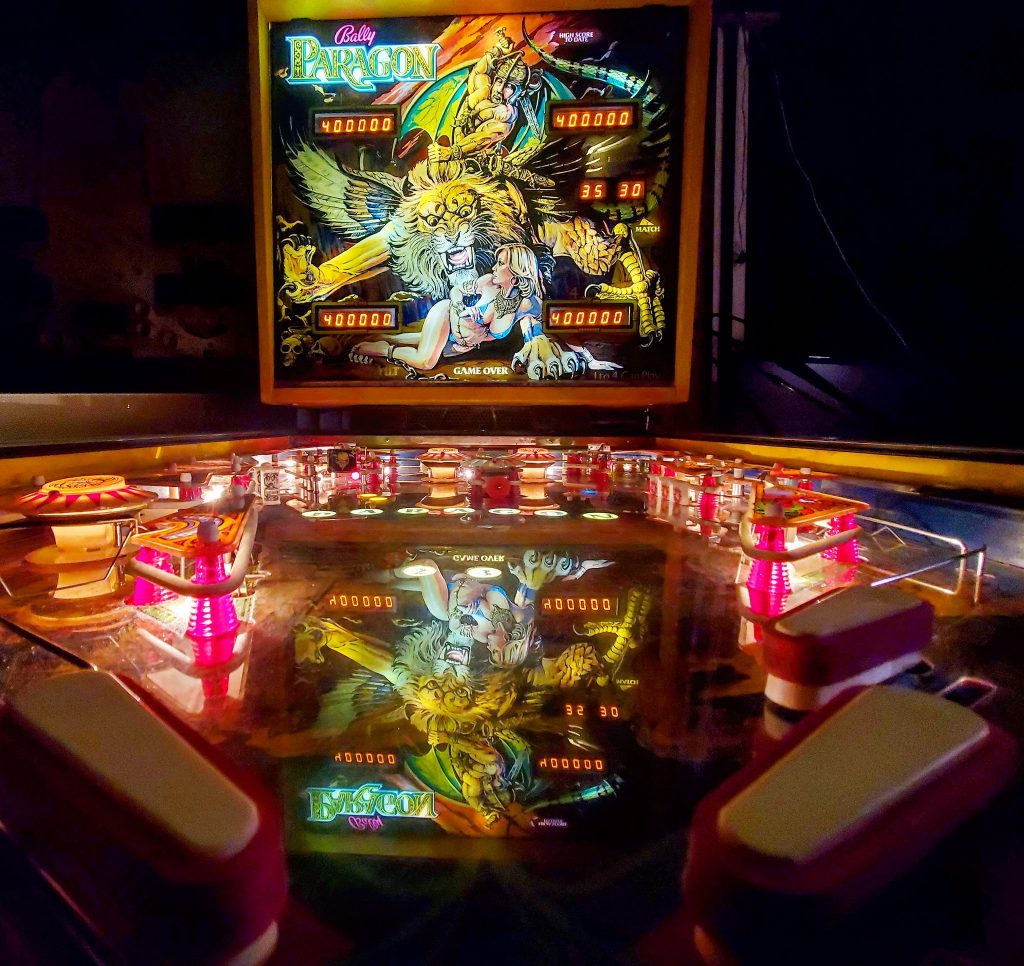How to play Paragon, the scoring, the ruleset and strategy. This is the original 1979 classic solid state game.
Category Archives: Bally35
Fixing “weak” pinball flippers
What happens when one of your flippers seems “weak?” What could cause that? I investigate on m y 1979 Bally “Paragon” pinball. But the cause of this could happen on any game regardless of era. Let’s take a look at how the flipper works and the different things that can cause “weak” flippers.
How to properly clean battery damage off a MPU board
This is the next video in my series of work on Paragon. After the first look (http://pinballhelp.com/first-look-bally-paragon-pinball/) I discovered there were still issues with the MPU board that were the result of continued corrosion even after the battery was removed and the board was supposedly cleaned. Whoever did the previous work didn’t clean the board enough and corrosion continued. I’m going to do my best to salvage the board.
First Look: Bally Paragon Pinball
Quick demo of fully-modded Stern “Trident” pinball with new rules and sound
After getting my Trident operational, I installed the BSOS system and have been working on fine-tuning the custom code and sounds. Here’s a short demo of what the new Arduino-based controller does to a standard Bally 18/35/Stern early solid state game.
Resources (courtesy Dick Hamill):
The code is all available on GitHub. It’s broken down into a base library and then machine-specific implementations. Rewriting other games requires a moderate knowledge of C/C++.
https://github.com/BallySternOS
Here’s a suggested parts list. If you bought all these things, you could create 6 of these boards. If you don’t need that many boards, you might find cheaper ways to source smaller quantities. I haven’t done any work to figure out if this is the cheapest way to source any of this stuff.
Cheap Arduino knockoff x6 ($20.99) – needs CH340 driver for programming / has to be ATmega328P
https://www.amazon.com/ATmega328P-Controller-Module-CH340G-Arduino/dp/B08NJNJCTX/
0.1″ 40-pin connector (40 pieces for $7.99)
https://www.amazon.com/Honbay-Single-Female-Connector-Arduino/dp/B06Y4S6G29/
32-pin Prototype PCB (2 pack for $9.99) – this won’t work for Alltek or MPU-200 because they have a 34-pin connector
https://www.amazon.com/Prototype-Snappable-Arduino-Electronics-Gold-Plated/dp/B081QYPHHP/
Wire ($7.99) – tons of wire
https://www.amazon.com/REXQualis-Breadboard-Assorted-Prototyping-Circuits/dp/B081H2JQRV/
74125 – ($1.95) https://www.jameco.com/z/74125-Major-Brands-IC-74125-Quad-Tri-State-Bus-Buffer_49373.html
Boot switch – x2 ($8.99) this switch will work for activating the Arduino board and toggling the speaker (see the writeup here to find out why: https://ballysternos.github.io/install.html)
https://www.amazon.com/gp/product/B07XMH174C/
OR
@RoyGBev has created a PCB and kit (doesn’t include the Arduino) here:
https://pinside.com/pinball/market/shops/1304-roygbev-pinball/04736-arduino-nano-adapter-for-classic-bally-stern
How to make a test bench rig for Bally-18/35 MPU boards using a PC power supply
I found this old video the other day and realized I didn’t have a post on my main site showcasing this video so I wanted to add it (also, this was before I learned the proper pronunciation of “Bally” LOL…. bah-lee).
How to add a switched power outlet to your pinball machine
These days modding games is all the rage: adding fancy toppers, custom lighting, subwoofers and powered speakers and more. But many pinball machines don’t have a facility for you to plug in extra stuff in your game. Many games do have a “service outlet” inside the game, but this is what’s called “un-switched” meaning it’s on all the time – mainly so technicians can use a soldering iron on the game with the power off. In this video I go over the process to tap into the switched power lines of the game to add your own extra outlet(s) that come on when you turn the game on.

